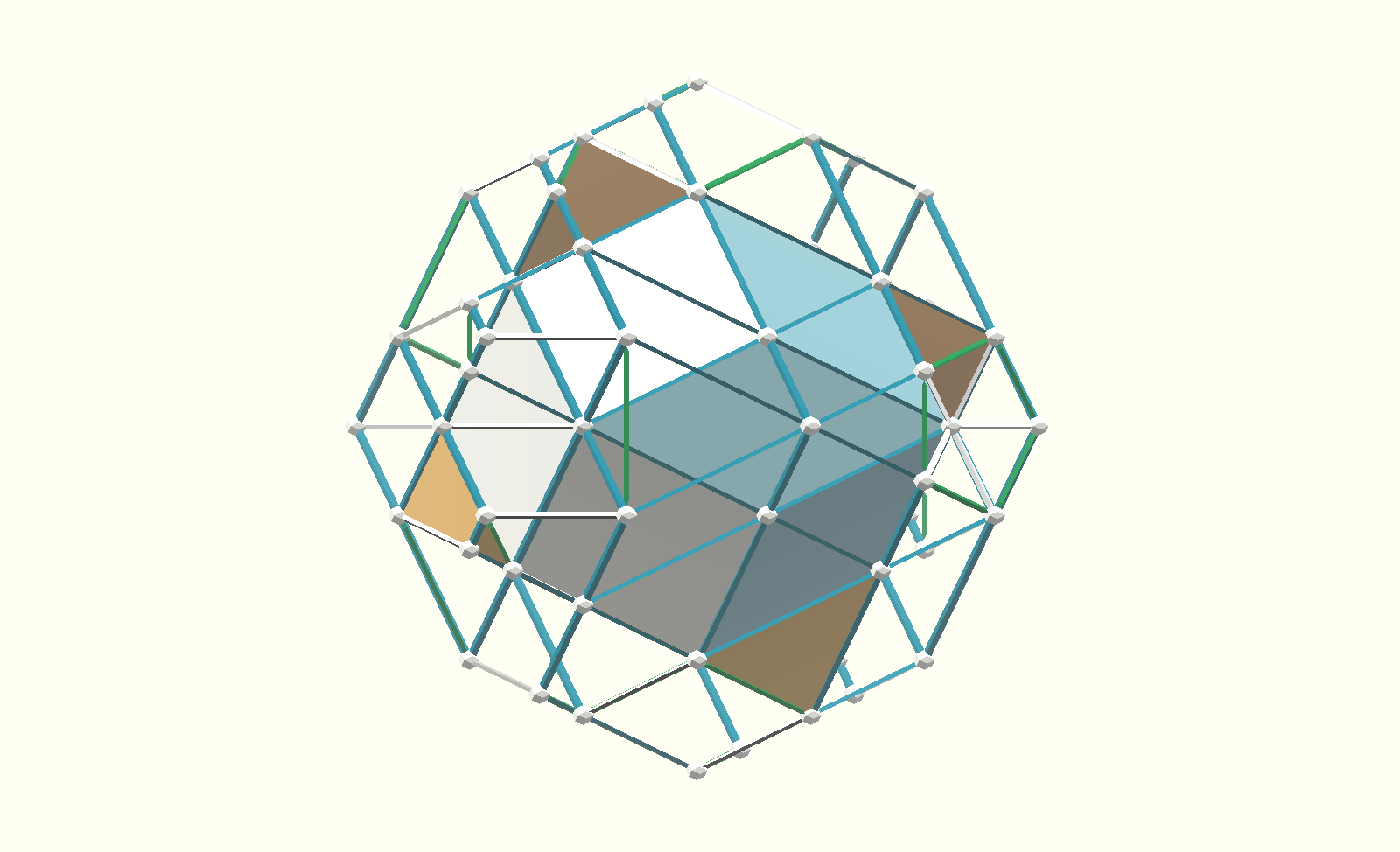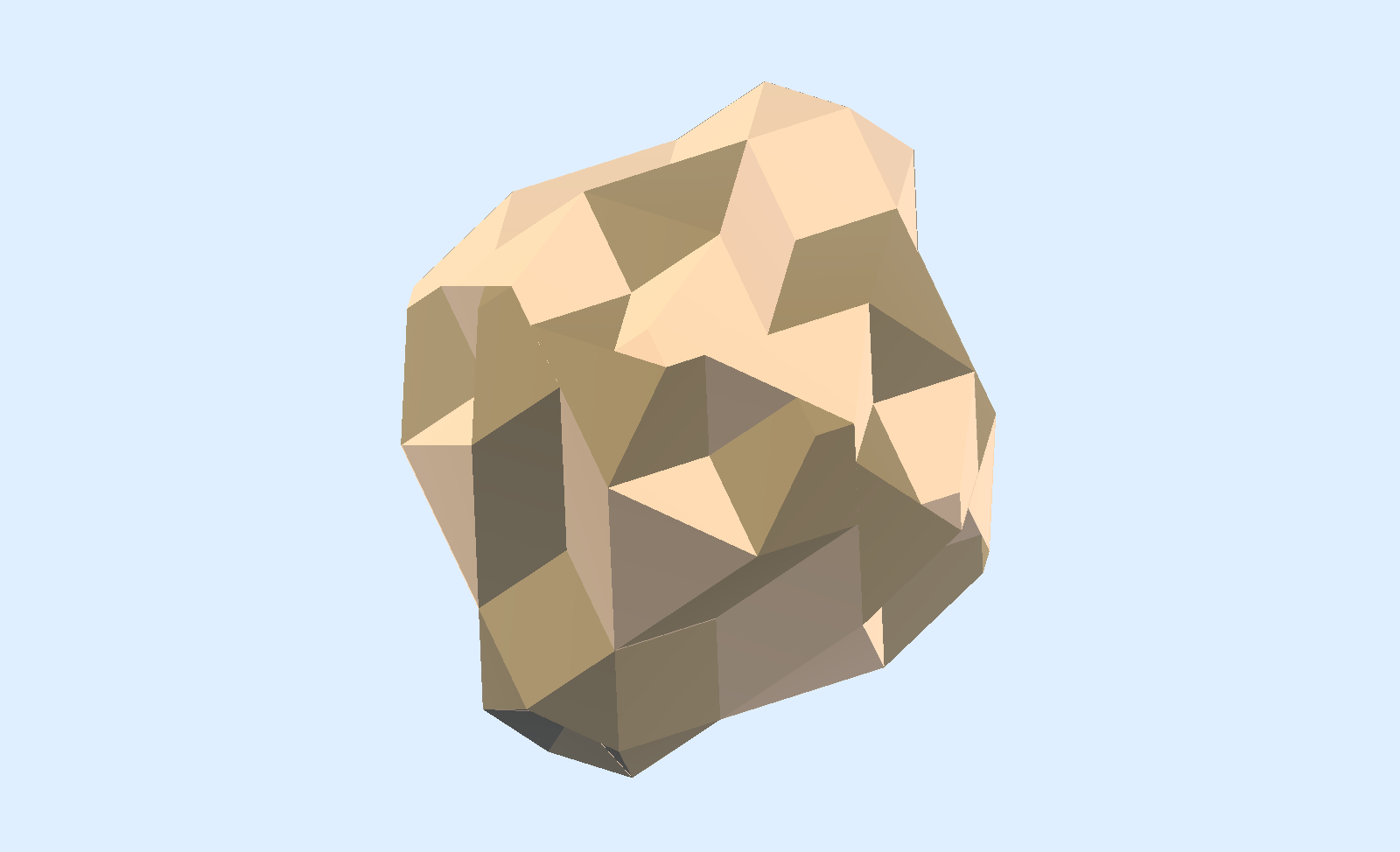This is a continuation of a series of models and images shown in Part 1. Certain zonohedra surrounded by sets of parallel prisms. These arrays of sticks, or blocks surrounding zonohedra correspond directly to Multi-axis composite beams. These prismatic shapes align with and extend the planes of the faces of the zonohedra. The profile of these sticks, or blocks, is determined in part or completely by adjacent sticks. The portions of the sticks that extend beyond the contained zonohedron, in this case a Triacontahedron, can be cut in various ways.
A 3D design created in vZome. Use your mouse or touch to interact.

This shows a Rhombic Triacontahedron with one of the 30 sticks that surround it.

The stick profile in this series is isosceles triangular. There are several ways to make the end cuts. This is what we call Rosette cut.

Here we have an Enneacontahedron, which is a 10-directional zonohedron. It has 2 kinds of faces, and thus 2 kinds of sticks to enclose it, each with different profiles. This shows a sample of the 2 types of stick.

Completely surrounded.

One aspect of this construction that is distinct fro the 3, 4, and 6 axis arrays is, while it takes 90 sticks to completely surround the polyhedron, the 60 wider type do not pass completely by each other beyond the zone as shown, but partially collide, or intersect further out from the interaction zone. However, there is a set of sticks that correspond directly to the 10 beams of three struts each previously defined. These can pass by each other without interruption. Here is this set of sticks, which have a profile that can be described as a truncated kite. Within the stick model and oriented to align with it is shown a representation of a tensegrity model, which shows a 1:1 correspondence between its 30 yellow struts and the 30 sticks.

Here is this set of 30 sticks magnetically connected and combined with a six-axis assembly, also magnetically connected.

Another zonohedron that can be enclosed with shaped sticks is a Rhombic Icosahedron, which has polar symmetry. Like the Enneacon, it has 2 kinds of faces, and so there are 2 kinds of sticks, which also would partially intersect each other if extended. This affine variant of Rhombic Icosa is made with “normalized” 5 direction sytem, so has 10 square faces and ten rhombic. Here is shown the RI with 4 sticks surrounding it. Sticks have Kepler Triangle profile, at 2 different scales for the 2 types.

Completely surrounded.

Other zonohedra can be surrounded with sticks, but for those with more than 2 types of faces, the process becomes more complex.
Some of the forms shown here, or variations of them, have also been explored by others, and used extensively in puzzle designs, notably by Stewart Coffin